#chinvat bridge
Text
Revelation 21: Shades of Zoroastrianism
Understanding of heaven and hell came when the Hebrew people languished in exile, then returned to rebuild Judah. During this “intertestamental” time, a very interesting thing happened in Babylon.
#Revelation21 #Heaven #Hell #Zoroastrianism
Then I saw a fresh new sky and a fresh new earth: for the first sky and the first earth went away, and the sea is no longer.
And the holy city—a fresh new Jerusalem—I saw coming down out of the sky from God, having been made ready as a bride having been adorned for her husband.
Then I heard a mighty voice from the throne, saying: “Behold, the tabernacle of God with the people, and God will…
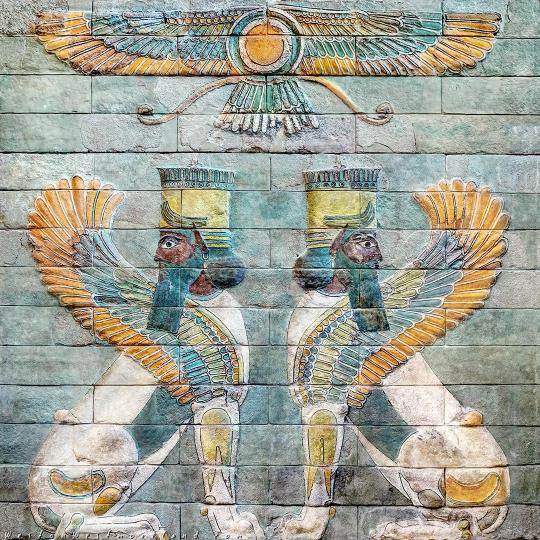
View On WordPress
#ahura mazda#angra mainyu#angry mainyu#chinvat bridge#Gochihr#heaven#Hell#revelation 21#revelation 21:1-8#spena mainyu#vohu mana#Zarathustra#Zoroaster#Zoroastrianism
0 notes
Text
Zorvanism - World History Encyclopedia
https://www.worldhistory.org/Zorvanism/
View On WordPress
#Achaemenid Empire#Ahriman#Ahura Mazda#Akarana#Angra Mainyu#Chinvat Bridge#Darius I#Denkard#Fatalistic#Frashokereti#heretical#Mainstream#Manichaeism#Materialistic#Mazdayasna#monotheistic#Ormuzod#Persia#Rashnu#Saoshyant#Sassanian Empire#Sects#Vohu Manah#Yasha#Zandiks#Zoroastrianism#Zorvan#Zorvanism
0 notes
Text
Cosmology of Aerrhea Part I
The cosmology of Aerrhea is very different from that of Earth, the world, the sun and the very laws of the universe are sometimes wildly different from that of our own universe.
The World
The world of Aerrhea is a cylindrical shaped one opposed to a globe like Earth. The cylinder is an oceanic world, it has no landmasses, only a deep ocean whith a bottom that is basically bedrock, which is very similar to the bottom of our own oceans by having hydrothermal vents spewing minerals into the water. The world spins around its own axis with no axial tilt, this movement makes the islands get arranged into island rings. Six of these island rings exist, each one with its endemic fauna and flora. The rotation of the world combined with the low pressure zone created by the sun also creates a central, unending storm. One notable fact is that if (somehow) something reaches the border of the cylinder it will not see it or fall out of the world, in fact it will not even realize that it has reached the border as it will wander into the exact opposite of that border, the other side of the world.
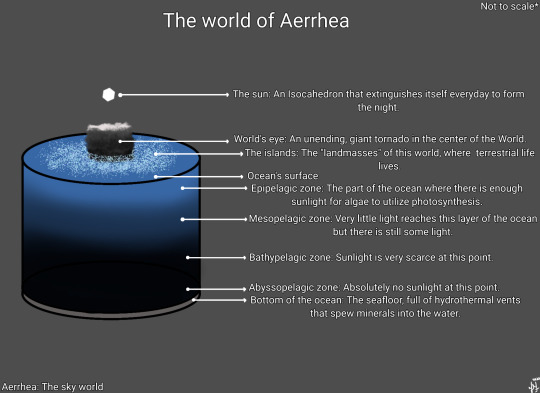
Diagram showing the main aspects of the world
Due to the Sun's size and luminosity being far lesser than that of our own Sun its light starts to fade away because of the gases in the atmosphere or the water, creating colder and darker regions in the world that are further away from the Sun.
In the ocean there is the Epipelagic Zone that is the highest layer of the ocean, it is highly productive because of the sunlight that reaches this area, making the process of photosyntesis possible by autotrophs.
The second layer is the Mesopelagic Zone where only 1% of the light given by the sun actually reaches this layer until it fades away, photosynthesis is already inpossible here but yet life is abundant as the animals here feed on the marine snow that falls from the epipelagic zone and from the sky.
The Bathypelagic Zone is completely devoid of light and very little life resides here, the ones that do eat marine snow too.
Finally, the deepest part of the ocean is called the Abyssopelagic Zone where surprisingly, there is an abundance of life due to the marine snow that is deposited in the bottom of the ocean who serves as food for "grazing" animals in the seafloor. Marine snow is not the only primary resource here though, hydrothermal vents are very common here and they are the base of the other 50% of the ecosystems in this oceanic layer. The hydrothermal vents spew tons of minerals in the water that are used by chemosynthetic bacteria to produce energy in a similar way to plants and other autotrophs, these bacteria are the primary producers of this ecosystem and so they serve as food for many other organisms.
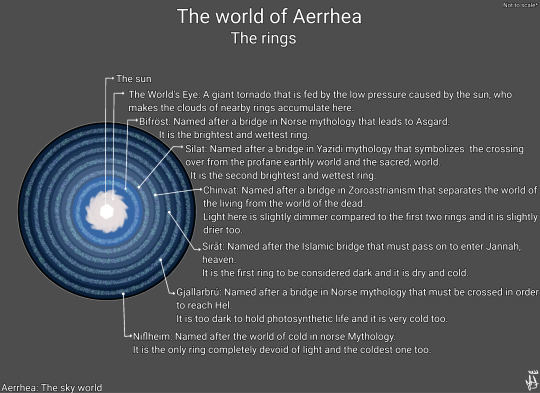
Diagram showing the rings of the world and some of their characteristics.
A Similar thing happens in the surface.As mentioned above the sunlight gets dimmer the further away you get from it due to gases in the atmosphere that scatter the light, making the furthest archipelago very cold and dark. Here are some traits owned by each ring:
Archipelagos:
Bifröst is the first ring of the world, named after the Bifröst bridge from Norse mythology that is a burning rainbow that connects Midgard(earth) to Asgard(the realm of the gods). It was named in such way because of how this ring(technically a circle) is the brightest and wettest ring as it is the closest to the center of the world and thus closer to the sun. It is also home to the World's eyes.
The second ring is called Silat, named after the Silat bridge from Yazidi religion that simbolizes the connection and crossing over from the profane earthly world and the sacred, esoteric world. The ring is named like this because it is the second ring of the world and so it connects the hot, wet and luminous center to the colder, drier and darker rings.
The third ring is called Chinvat, named after the Chinvat bridge in Zoroastrianism that separates the world of the living from the world of the dead. Named so because as the third ring it is the midpoint between the lighter and darker rings of the world, similarly to the bridge's role.
The fourth ring is called Sirāt, named after the as-Sirāt bridge from Islamism that is the bridge where every person will pass trough during the judgement day, the damned falling from it onto the hellfire and the saved going to paradise. This ring's naming is similar in reason to the Chinvat ring.
The fifth ring is also named after a Nordic bridge, Gjallarbrú which is a bridge that leads to Hel, the underworld in Norse paganism. Such name is in reference to this ring's proximity with the last ring of the world that is cold and dark. Gjallarbrú is one of the coldest and darkest rings of the world, here photosyntesis is unviable and so the trophic chain is ignited not by plants but by bacteria.
Finally, the last ring of the world, Niflheim. Named after the world of primordial ice from Norse culture, which is fitting for this ring due to its intensely cold temperature as it is the furthest away from the sun. Just like Gjallarbrú it is too dark for photosyntesis and curiously, the native life is, actually native. The organisms that live here are not Earthen organisms but rather life originary from Aerrhea.
#worldbuilding#art#illustration#fantasy world#fantasy art#fantasy#fantasy maps#fantasy worldbuilding#cosmology#my art#my post#my writing
17 notes
·
View notes
Text

Daena, the goddess of conscience🪞🔆
Daena or Din is the goddess of conscience. She is associated with responsibility and choosing the right path. The ancient Iranians believed in Asha, the order of the universe, religion, and human instinct. Daena guides people towards Asha. After the Zoroastrian revolution, Daena had a significant impact on neighboring civilization's beliefs in religion and morality. She was also considered the goddess of wisdom. Daena evaluates the actions of humans after death on the Chinvat Bridge, along with Mithra and a few other gods. She also delivers people to their actions in the field. Daena's two dogs helped her in these roles and has a good relationship with Ashi (some texts say they are sisters) and Mithra. She guides Mithra's morning chariot in the sky.
I think Daena is the most fascinating and terrifying goddess (emoji 🙂) of ancient Iran. She is like an older sister who is aware of everything 🥺
#oc#original character#Daena#Daena goddess#ancient gods#ancient goddesses#ancient persia#ancient history#myth#art#drawing#traditional art#color pencil#color pencil drawing#traditional drawing#oc artist#artists on tumblr
13 notes
·
View notes
Text
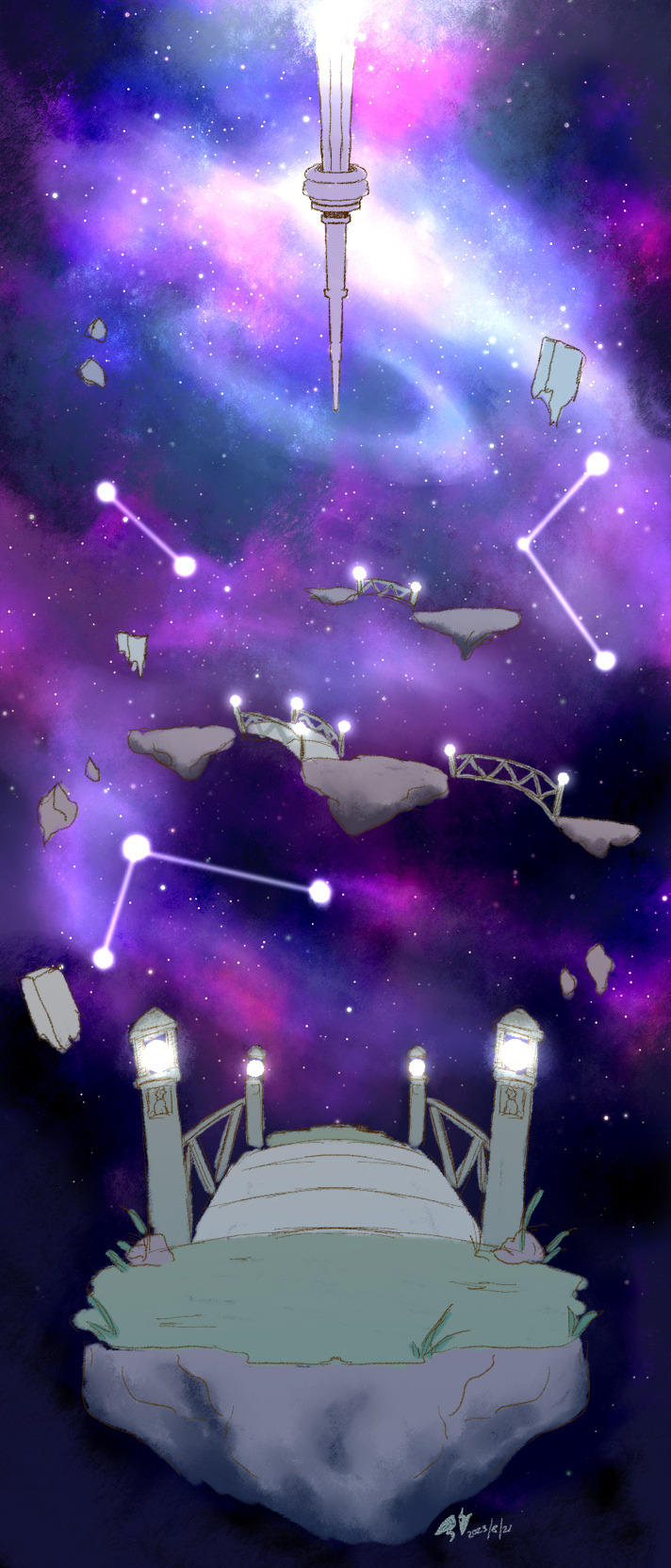
Concept art of a location for my Persona fangame idea.
It's called the Chinvat Bridge.
2 notes
·
View notes
Text
Cold winter: Mithraic mysteries
MITHRAIC MYSTERIES
Category: Roman mystery cults
Despite the name of this series, I’ll take you for this post in a quite hot part of the world… Rome and before that Iran. If you look a bit for the “history of Christmas” around, you’ll often find references to how originally it was “Mithra’s birthday” stolen away by the Christians. Let’s dig a bit into that…
I) Who is Mithra?
Mithra was a god of Persia, in the old Zoroastrian religion – back in the land that is today Iran. Mithra was a Persian god with two main functions, a “natural” and “social” one. On his “natural” side, Mithra was a god of the sun and the light, protector of cattle and harvest, and guardian of the waters that made sure pastures were always moist enough. On his “social” side, Mithra was the god of justice, patron of oaths and covenants, all-seeing protector of truth and contracts. Constantly watchful, never sleeping, undeceivable and infallible, Mithra was also one of the “three judges of the Chinvat Bridge” (the “bridge of separation” that souls must cross to go to the land of the dead): alongside Rashnu the god of justice and Sraosha the god of obedience, Mithra of “truth” judged the souls to see if their goodness outweighed enough their badness to grant them passage. “Mithra of the Wild Pastures”, with “a thousand ears and a myriad eyes” originally started out as distinct from the sun (who was another god), but with time he slowly took over the role of the sun god (a change in characterization that is theorized to be due to the Persian contact with the Babylonians and the Greeks, resulting in Mithra being confused with other “judicial-sun-gods” like Shamash or Apollo).
Now all of that being said… We are not here to talk about the Persian Mithra. We are here to talk about the Roman version of the god (usually called “Mithras” to distinguish him from the original “Mithra”). You see, as the Roman Empire grew very large and became very powerful, its contact with foreign countries led to a specific phenomenon: “mystery cults”. More precisely “exotic foreign mystery cults”. When the Romans discovered or conquered a new “border-nation”, what they started to do was “adopt” one specific deity of the country, and bring it back to Rome to worship it and have a cult around it. It wasn’t anything knew as Rome had, for centuries now, either absorbed the gods of those they conquered (the Greeks) or imposed their gods on conquered lands (Gaul) – but the novelty here was the idea of “mystery cult”. These deities brought back from the foreign lands were “Romanized”, but not made part of the official Roman religion. A mystery cult is a type of “private” worship that you can only participate in if you are initiated through specific rites – and they are called “mystery cults” because its members actually refuse to speak about their faith or reveal their rituals to anyone who is not initiated. This was the very opposite of the Roman religion, which was public and very open about everything and everyone. There were a LOT of “mystery cults” that popped up in Rome, it was truly the “new fad” so to speak. You had a mystery cult for Cybele, you had a mystery cult for Isis, you had cults of Serapis or Attis… And of course, as you can guess, when the Romans discovered Persia, there was also a mystery cult for Mithra that promptly popped up: the Cult of Mithras, or Mithraic Mysteries, or “Mysteries of the Persians” (today we can use the term Mithraism). Heck, in fact Christianity began its Roman career as just “another one of those exotic mystery cults”. Even more: the Cult of Mithra is believed to have been in the Roman Empire the true and serious rival of Christianity in its early times.
II) The cult of Mithras
Now, the Cult of Mithras being a “mystery religion”… well we don’t have a lot of info about it. Or rather we have a lot of info, but we don’t always know what it means, because they are just clues to an unsolved mystery, elements without contexts, nameless pictures.
We know that a very central element of the cult, depicted everywhere, was a scene depicting Mithras killing a bull. This “tauroctony” (bull-slaying) was truly unique to Rome – because again, the Roman Mithras was different in many ways from the Iranian Mithra. In every temple of Mithras you have a picture of the god, dressed in an Anatolian costume and wearing a Phrygian bonnet, kneeling over a “sacred bull”, holding him by the nostrils with his left hand, stabbing the beast with its right. Many other details can pop up in the scene: sometimes a dog and a snake will drink the blood of the bull ; other times a raven will be sitting on the bull or flying around ; you can see a scorpion attacking the genitals of the bull, or ears of wheat coming out of the bull’s tail. Usually the scene happens in some sort of cavern or grotto, with Mithras being assisted by two torch-bearers (one with his torch upward, the other with his torch downward) – and very often Mithras is seen looking back, above his shoulder, up to him (other depictions explicit that he is looking at the sun, or rather its divine form, Sol). In fact, sometimes the “bull-killing scene” is represented/depicted/sculpted with the circle of the Zodiac around it. It was traditional to put at the top-left corner of the “bull-slaying pictures” the god Sol with a fiery crown and riding a quadriga – not only is Mithras looking at him, but sometimes Sol even sends a ray of light towards him. Other times, it is rather Luna that will appear at the top-right corner riding a biga and crowned with a crescent moon.
The scene of the bull-slaying is constantly followed by a second scene: the “banquet” or the “feast” (to the point sometimes the picture of the feast was created right behind the killing scene so you just had to flip around one picture to have the other). This scene has Mithras feast alongside Sol Invictus (Sol the Unvanquished, the same Sol – sun god/sun personification) – it is clear that the meat they feast upon is the meat of the killed bull. The third most important Mithraic scene, usually depicted before the bull-slaying, is “Mithras’ birth”. Mithras is usually depicted being “born out of a rock”, emerging out of the rock as a young boy, with a dagger in one hand and a torch in the other – and while entirely nude, he is still wearing his Phrygian cap. This scene comes with numerous variations: in one fire appears out of Mithras’ rock and cap, in a second a fountain emerges from the base of the rock, in a third he rather holds bows and arrows, in a fourth his torch is replaced by lightning – and it was also very common to depict animals present around the birth, from dogs, serpents or eagles to snails, lobsters or crocodiles, passing by lions or dolphins. And when it isn’t animals that surround the birth, it is gods: in one depiction Oceanus, the sea-god, is present ; in another Mithras is surrounded by the gods of the four winds ; and in a fourth there is a quartet of gods identified as Sol, Luna, Saturn and Victoria (the goddess of victory).
There is one last important “image” part of the Mithraic cult that, unlike the other three, is still shrouded in mystery and unexplained to this day. A recurring figure of a lion-headed man, with a body naked but entwined by one or two snakes. He usually was depicted with four wings, an open-mouth, and holding in his hands two keys and a scepter: one statue had the symbols of the four seasons on his four wings, and a thunderbolt engraved on his chest. From inscriptions left around these statues and images we know that the name of this entity was “Arimanius”, and that he was a god of the Mithraic Cult, but we don’t know much more about him.
Now, what I described to you were the imagery and iconography of the cult. But what about its rites? Well… We know that to be initiated into the cult you were asked a series of specific ritual questions to which you had to answer with specific sentences – and by entering the cult you swore to be faithful to it and to never reveal its secrets. Around midsummer Mithraic cults held a big feast of meat and fruits (probably to celebrate the sun at its highest and most powerful). There was no “leader” or “higher authority” for this cult, no predominant temple – just a series of equal sanctuaries and temples (known as “mithraeum”), underground windowless temples. Usually these temples were a reproduction/recreation of the mythical cave in which Mithras had killed the bull – to the point that when people could bring natural rock, they imitated it with lath and plaster. Each temple was also close to a spring or stream as fresh waters were needed for Mithraic rituals.
We know that there were seven “degrees of initiation” within the Cult of Mithras, each one corresponding to a different planet and with its own symbols. At first you were a “Corax” (Corux, Corvex ; a raven or crow), holding a beaker and a caduceus, and associated with Mercury. Then you became a “Nymphus” (or Nymphobus, a “bridegroom”), wearing veil, circlets and diadems while holding a lamp and a hand bell, associated with Venus. The third rank was Miles, the Soldier, holding a lance and drum, while wearing a helmet, belt, pouch and breastplate, associated with Mars. The fourth rank was the Leo, the Lion, with laurel wreaths, holding battilum (an iron shovel), sistrum (a musical instrument) and thunderbolts, associated with Jupiter. The fifth rank, the Luna/Moon rank was Perses (Persian), with a Phrygian cap, a hooked sword, a sickle, a sling, a pouch, stars and a crescent moon. The sixth rank, the one of Sol/Sun, was Heliodromus (sun-runner), with robes, whips and torches, imitating Helios. The final and highest rank of the cult was Pater, the Father, associated with Saturn, with elaborate jewel-and-metal robes, a chasuble or cape, a patera (metallic libation bowl), garnet or ruby rings, and holding a mitre or shepherd staff.
To be admitted into a Mithraic cult you had to shake hand with the “pater” of your local cult – a reproduction of a mythical scene in which Sol and Mithras shake hands after the killing of the bull. In fact, to access each grade, some sort of “test” had to be done, usually an exposure to extreme heat, extreme cold or another form of peril. All of the members of the Mithraic cults were men, no women were allowed, and there was a LOT of soldiers among the cult. It makes sense as mystery cults usually always start within the Roman armies (who are the first ones exposed to the foreign cultures of the conquered or invaded lands), before making their way up to Rome – but Mithras mysteries are unusual in that they stayed a mostly martial cult, with the non-soldier member being merchants and minor bureaucrats. There was also a LOT of slaves or “freed-men” (slaves that were given back their freedom) in this cult, while very few aristocrats or politicians – though when there was upper-class people, they usually were found in the highest ranks, especially the “Pater” rank. Sometimes we know local cults had more than one “Pater”, and the name of “Father of Fathers” appeared also sometimes to hint at a supreme leader of a local Mithraic community.
III) A bit of history
The beginning of the Mithraic Mysteries are unclear. Earliest evidences place the beginning of this cult between the first century BCE and the first century CE – notably in the first century BCE we know that a “reverence” and “cult” of Mithras, fused with Apollo and Helios, had spread into Greek culture through Greco-Iranian realms, usually depicting Mithras as a beardless youth wearing a Persian tiara of Phrygian cap with Parthian clothes – but the earliest sculptures and engravings of the Mithraic Cult in the Roman Empire date from the 1st century CE. Temples of Mithras weren’t just in Rome per se, but also in other Roman cities such as Ostia, as well as important Roman colonies: Numidia in Northern Africa, Dalmatia above Greece, or Britain. The earliest literary reference to the cult are also date from the end of the first century. In Statius’ Thebaid, during a prayer to Phoebus (another name of Apollo) there is a description of Mithras fighting a horned-beast in a Persian cave ; Justin Martyr (an early Christian) accused the cult of Mithras of imitating the Christian communion in their rites ; Plutarch describes the Mithraic rites as having brought to Rome and Greece by the pirates of Cilicia (actual Turkey) in the first century BCE, Dio Cassius mentions that higher-ups of the Roman government under Nero did know and were part of the Mithraic cults…
We know that the apex of the Mithraic cults was between the second and third centuries, a time where the Cult grew in size and popularity enormously, in parallel to the cult of the Sol Invictus which read the official public Roman religion (the two cults seemingly being tied together or conflated). But by the 4th century Christianity (which from an obscure “foreign mystery cult” had reached the upper-class and political institutions of Rome was growing in power until it would become Rome’s new official state-religion) starts to harass and persecute the cult of Mithras, seen as rivals/copycats/pagans – and by the 5th century Mithraism was completely obliterated. It is theorized that the cult still survived in rural areas far away from cities during the 5th century ; but we know that Christians either destroyed themselves Mithraic sanctuaries, or actually built churches on top of them to bury them down.
To consider a bit more Mithraism relationship with Christianity. Early Christians were afraid and criticizing the Mithraic Cults precisely because of how eerily similar they were to their own religion, to the point that Christians interpreted the cult of Mithras as an evil copy and devilish mockery of their own rites. For example the Mithraic initiation began with the man taking a ritual bath, and at the end of the ceremony receiving a sacred mark on his forehead: very similar to Christian baptism. Initiates also seemingly performed the ritual consumption of bread and a cup of water, seen similar to the Christian Eucharist. Historians have noted that, had Christianity not become as powerful as it did back then, Mithraism could have been the actual next big religion and become Rome’s official imperial cult – effectively replacing Christianity in history.
- - - - -
Now, after this long history lesson: what is the tie with Christmas?
Well… One of the big celebrations of the Mithraic cult, beyond the midsummer feast, was the 25th of December, which was the “Mithraic New Year” and on which the Cult celebrated the birth of their god Mithras. Which is why many people point out that it is another similarity to Christianity, and that Christians might have imposed Christmas on this date to over-rid “Mithrasmas”.
Mind you, not everybody agrees with that. You see, some people point out that the 25th of December wasn’t a Mithraic celebration, but that it is a misinterpretation of another Roman holiday happening at this date: the Natalis Invicti, that the Mithraic reinterpreted under their own light, but that did not particularly “belong” to them.
The Natalis Invicti (or Festival of Dies Natalis Soli Invicti) was the day of a “birth festival” celebrating the god “Sol Invictus” (which as I said above was strongly associated and sometimes confused with Mithras) – and it was presumably this holiday that the Christians tried to “cover up” with their Christmas.
The Sol Invictus, or Unconquered Sun, was a deity of the Roman pantheon not exactly the same as previous solar gods – he was not exactly the same as the original Roman Sol, adapted from the Greek Helios, and sometimes known as “Sol Indiges” (the deified sun). Sol Invictus rather seemed to have been originally a Syrian god adopted by the Romans whose cult slowly replaced Sol Indiges’ cult over time. It should also be noted that “Invictus” was originally just an epithet of many Roman deities, such as Jupiter, Mars or Apollo – so the god might have been originally just an aspect of a Roman god that gained a life of its own ; and we also know that when the emperor August deified himself and got a cult to worship him as a god after his death, he was also often qualified of “soli invicto”, “the unconquered sun”). And as I said before, the Sol deity of the Mithraic Cult was identified as “Sol Invictus” and through time Mithras considered to BE Sol Invictus, or Sol Invictus to be another name of Mithras. So there quite a lot of confusion here.
What we know is that the cult of the Syrian Sol Invictus was brought to Rome and established by Elagabalus when he was a teenager, and as an emperor he neglected Rome’s traditional deities to promote his own Sol Invictus god, which was equated with the previous purely Roman Sol god and Jupiter. Then it was the emperor Aurelian who, in his religious reforms, placed the Sol Invictus in a rank making him one of the most prominent and important deities of the empire – making its previously low-classed and low-ranked priesthood into a prestigious priesthood in which nobility could enroll. And later, Emperor Constantine decreed that the last day of the week would be “Dies Solis”, the Day of the Sun, the day tied to Sol Invictus: Sunday.
Oh yes, and to clarify about why the 25th of December would be chosen for such a "festivity" celebration: in solar cults, the winter solstice (to which the 25th of December somehow corresponds) is usually seen as the moment where the "sun is reborn" or the "sun is birthed" because it is after this point that days start to get longer, that the cold season weakens and that the sun "returns" to the world.
9 notes
·
View notes
Text
Symbolism in Kingdom's music videos. Issue #13
The BRIDGE is a widespread symbol in different cultures. It is, first of all, a symbol of unification, as well as a symbol of the difficult transition between the world of the living and the world of the dead. He can embody a difficult emotional period in life.
The bridge is associated with the danger of crossing into someone else's, often enemy territory.
In Zoroastrianism, it is believed that the souls of the dead are in front of the Bridge of Separation (Chinvat Parvata), through it you can get to paradise: the bridge widens for the righteous, but for sinners it becomes as narrow as a razor blade.
In a more general sense, the bridge symbolizes the transition from one state to another. It is a powerful symbol of change and transformation.
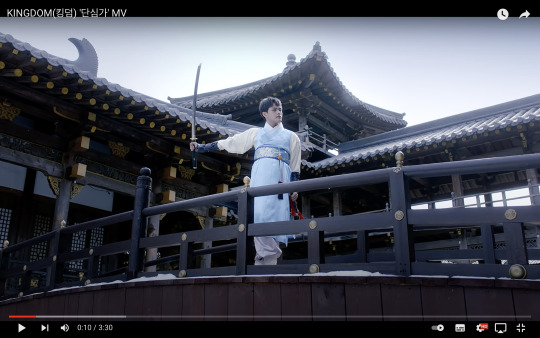
The rainbow is often called the heavenly bridge.
RAINBOW — symbolizes the bridge between the supernatural and the natural worlds; usually a good omen, as in meteorology.
In the Jewish and Christian traditions, the rainbow is considered a sign of God's reconciliation with life on earth after the Flood: "I place my rainbow in the cloud, so that it may be a sign of the eternal covenant between me and the earth" (Genesis 9:13). In Western art, Christ is sometimes depicted as a Judge sitting on top of a rainbow. It also occurs as an attribute of the Virgin Mary and the Trinity (three-striped rainbow).
In India, the rainbow is perceived as a bow to the hero god Indra.
In Tibetan Tantric Buddhism, the "rainbow body" is the penultimate transitional state of meditation in which material existence begins to transform into pure light.
Often a rainbow symbolizes a stairway to heaven (for example, the seven-colored rainbow of the Buddha). In many traditions, the rainbow is the road to paradise. It is believed that, as a water and at the same time a solar symbol, a rainbow resting its ends on the ground indicates places where there will be a good harvest or hidden treasures — a folklore "pot of gold".
However, the symbolism of the rainbow is not always positive. So, in some early cultures, the rainbow is a symbol of the afterlife. In some parts of Africa, India, Asia and among North American Indians, the rainbow was associated with snakes, and its power could be either positive or negative. In some Central African myths, Nkogolo, the Rainbow King, is a cruel tyrant. Hence, perhaps, the widespread superstition in Africa and Asia that it is unsafe to pay attention to the rainbow — the consequences can be unpredictable. In Central Asia, ribbons of rainbow colors were used in shamanic rituals symbolizing a journey to heaven, but folklore warned of the danger of touching the rainbow and dizziness when looking at it.

7 notes
·
View notes
Text
amelie can be considered not only goddess of lies but inevitably of the purgatory-like beach
if higgs-amelie is sending people to the beach to then proceed to come back and be ressurected, it aligns completely with “sending them to the house of lies”
the house of lies
is the beach.
“ The good, led by the maiden, will pass over to the “House of Songs” or Paradise as angel-like beings who will serve as guardians of the living good people. The souls of those who have lived evil lives will be attacked by the witch and will fall as demons into the dark cold ravine or “House of Lies” that is Hell. The good souls see a beautiful and dignified woman, while the evil souls see a witch. “
“ Instead of burying the corpse, Zoroastrians traditionally laid it out on a purpose built tower (dokhma or 'Tower of Silence') to be exposed to the sun and eaten by birds of prey such as vultures. “
“According to some sources, it is the bridge itself, Chinvat, that decides on the fate of souls. “
4 notes
·
View notes
Note
Why was the pianist so aganist even emergency unaliving again?
Then again, when her boytoy gets close to the Chinvat Bridge (afterlife), murder-protect instinct prevails.
Yay!

Well, in case you forgot somehow, I TRIED doing that once before, and not a single day goes by where I don't regret it. Is it a bad thing that I don't want to kill any more people?

What do you mean "any more?" You've never killed anyone before, have you?

Well...no, not really...but...

*sigh* Kaede, can I tell her? We all trust Mona enough by now to let her in on shit.

...Yeah, ok. Thanks.

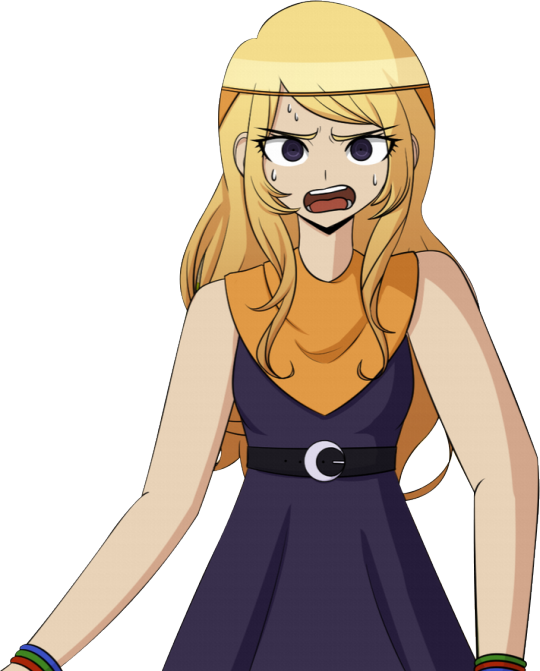
So...the reason why you were executed, is because Shirogane framed you for a murder you didn't commit?

More accurately, she framed me for a murder I TRIED and FAILED to commit.

I didn't kill Rantaro, but the fact that I attempted to is something that I can never forgive myself for. I was so desperate to help everyone, but it was stupid that I ever considered murdering ANYONE an option.

Has Rantaro said anything about it to you?
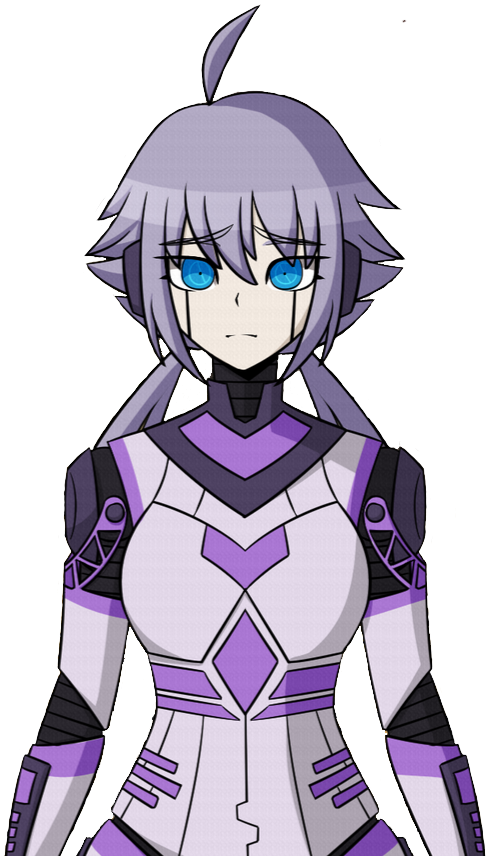
Kaede did attempt to apologize before, but Rantaro did not seem to know what she was referring to. He assumed she was talking about something else.

So he doesn't remember it?

Well, he probably remembers the shotput, but not how it got there. He would have remembered Tsumugi killing him.

Well, at least that explains why you're so on edge around him.

It's not just that Mona. That's one reason why we're all skeptical of Rantaro, but it's not the main one.

The truth is...we don't KNOW him. He was the first person to die in the Killing Game, and the amount of personal information we have on the guy is FRIGHTENINGLY little.

Well...if he doesn't know, and if that's how you feel, is there really any point in apologizing to him?

Even after all these revelations about him possibly wiping my memory...Yes, I still think I should.

Enemy or ally, he deserves to know, and he deserves an apology.
#danganronpa survivor#danganronpa#danganronpa v3#drv3#danganronpa new world order#drnwo#kaede akamatsu#miu iruma#miiyu#m11-yu#mona nwo#ask#rise and shine arc
5 notes
·
View notes
Text



I’ve wanted to post this for so long sooooo… here!
In our conception of the afterlife, Daēna/Dēn ‘Vision, Insight’ (or ‘vision-soul’) guides the Soul/Urvan across the Chinvat Bridge into Paradise (House of Song, imagined as endless Light/Melody, Unites the Soul with Ahura Mazda)... Just as Beatrice guides Danté through the spheres of Heaven, up to the Empyrean of God, where he becomes one with Divine Love...
Once he reaches the Empyrean, Beatrice becomes more beautiful and luminous... Just like Daena does on account of the Soul’s alignment with Asha (Humta, Hukhta, Hvarshta— Good thoughts, good words, good deeds). To the righteous she appears/reflects back as a “sweet-smelling”, luminous maiden.
& likewise with the romantic context of the IRL Dante and Beatrice… In the Vahištōišti Gatha (Y 53) there is the visual of the meeting of the soul and it’s vision as a unified marriage, with the consequence that the daēnā (active) lets urvan see (causative) its daēnā (passive). This “marital union” is also the moment of consultation (hǝ̄m.paršti; Y 33.6) with God/Ahura Mazdā.
:-)
#Catholic#Zoroastrian#religion#okay last Zoro post for today :)#I love finding inter religious parallels like these. I do think humans have common experiences with divine
7 notes
·
View notes
Text
The Sacred Mountains - 4/ Ambivalence
We therefore easily recognize the dual character of the mountain, its fundamental ambiguity, in a word its ambivalence, all in all normal since it participates in two different worlds as a border.

This point seems to me to be well illustrated in the Iranian myths : there, the soul of the dead is first taken to the summit of Elbrus (pic above), where sits a tribunal of three divine judges who practice psychostasis ; then the soul ventures over the Chinvat bridge, thrown over the abyss of hell, wide and easy for the pure soul, but narrowing as the wicked approach and end up falling into the abyss.
-
in Mythical Aspect of the Mountain in the Middle-Ages, C. Lecouteux (french article)
-
credit pic here
29 notes
·
View notes
Note
love your blog! Q: what are your spiritual beliefs & do you agree with most things in abrahamic religions? 💓
Thank you!
I study a lot of religions, and when you do so you realize that we’re basically all saying the same thing. Its the same story that is being told again and again. For example, for those of you that know about the islamic sirāt bridge, well there’s an equivalent in the zoroaster scripts (chinvat bridge), there’s also the concept of sidrat al muntaha in the hindu texts.
Really the only difference resides in interpretation, which depends on the culture, society, era, and the comprehension of the people responsible for conveying the message.
24 notes
·
View notes
Note
YES, KIYO! DO IT! TEAR THAT LITTLE GREMLIN'S NERVES OUT!







Hey, c’mon, we can talk about this.
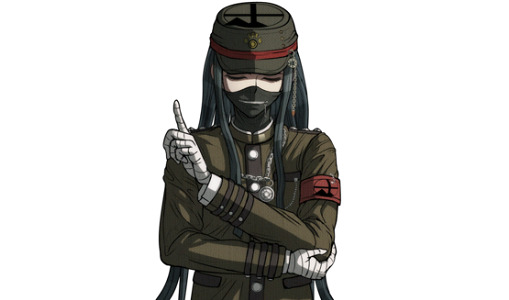
Very well then. Let us talk.
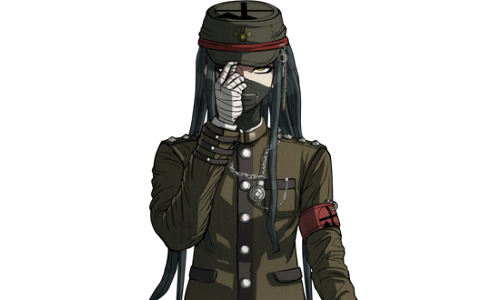
Tell me, are you familiar with Zoroastrianism?

Uhh...not very?
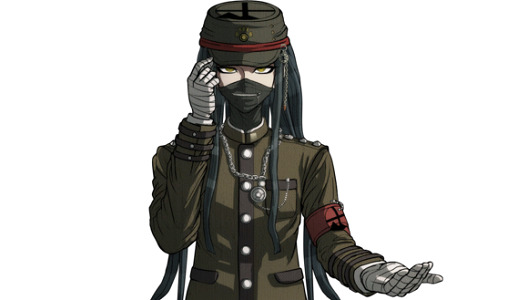
One of the religion’s beliefs concerning the afterlife is that of the Chinvat Bridge. It is the connection between our world and the world of the dead, which a soul will have access to on the fourth day after their death.

For a soul to pass from one to the other, they must cross it. What form it takes is dependent on the soul’s Asha, or the essential truths of their being.

For the righteous and good-willed, the bridge is wide enough to cross, brightly lit, and at the end they are met with Daena, a beautiful spirit of revelation who will guide them to the empyrean realm known as garö demánæ, or the House of Song.
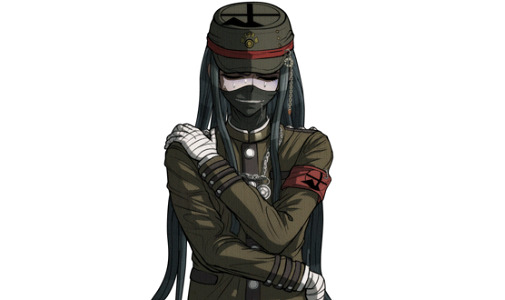
However, should the soul have lead a life of wickedness, the bridge will narrow to that of a razor’s edge. They will plunge into the abyss below, a dark realm ruled by Ahriman, the embodiment of all evil, where they will face eternal punishment.

Do you know what his realm is called?
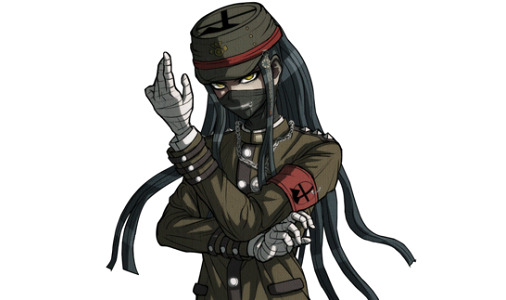
Druj-demana. The House of Lies.

Oh...I-I see what you did there.
46 notes
·
View notes
Text

Vayu Vata, the god of wind 🌬🌪
Vayu Vata, also known as Vay-bod, is the god of air, wind, storms, and atmospheric events. He is a neutral god who can help both good and evil humans. He is very powerful and has been called upon for help by Ahura Mazda on several occasions. Vayu has a cool and kind face, but he can also be terrifying. He helps evil humans, but that does not mean he supports them. He is the observer of human actions and after death, accompanies humans to the Chinvat Bridge (as-Sirat in Islam), where he judges their actions along with Mithra and Daena. Purple is one of Vayu's favorite colors. He wears golden and purple clothing during war, when he destroys demons with his powerful weapons. In times of peace, he wears white clothes and adorns himself with golden jewelry. Vayu cooperates with Zurvan and has a good relationship with Indra (Indar in my story). He is also the guardian of other gods and does not allow demons to enter the world of gods.
In my opinion, Vayu is like a kind uncle (100 % uncle, father never :)))) ) who loves his nieces and nephews very much. He is always there for them and makes time for them. I think of him as a big supporter 🤍
#oc#original character#vayu vata#ancient gods#ancient persia#drawing#art#traditional art#traditional drawing#color pencil#color pencil drawing#artists on tumblr#Oc artist
2 notes
·
View notes
Photo
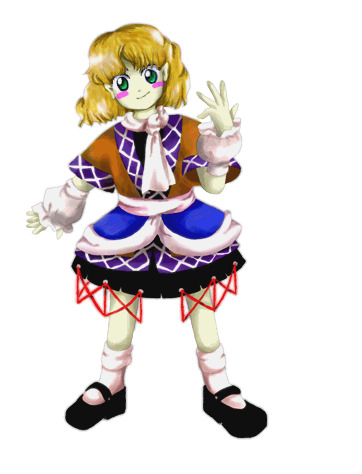
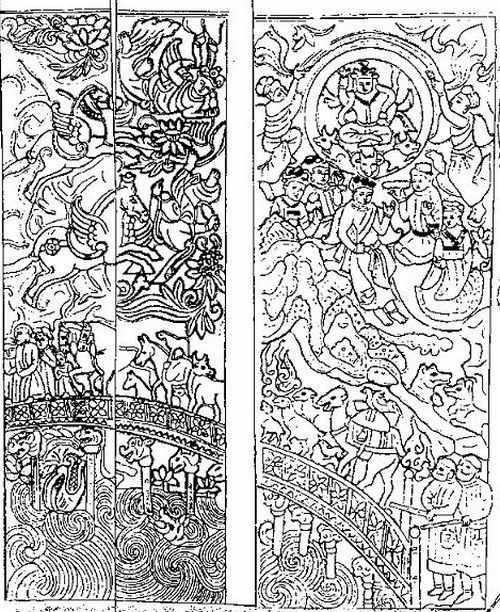
Parsee being named after one of the two remaining Zoroastrian communities, the Parsis of Gujarat, and the fact her clothes are based on a fresco depicting inhabitants of Central Asia makes me wonder if making her a hashihime who lives on the bridge leading to a (former) hell is meant to reference the Chinvat Bridge from Zoroastrian beliefs (due to her design I find it unlikely ZUN decided to make her a foreigner as a last minute addition). Souls of the dead have to pass it to reach the afterlife; the righteous are greeted by a female psychopomp known as Daena, who invites them to heaven, while the wicked are dragged down to hell by a demon.
Coincidentally, most depictions of said bridge come from Sogdian art - and Sogdians were culturally somewhat similar to, and extensively traded with, Tocharians (some historical Chinese sources seem to conflate them with each other, but it’s an oversimplification), whose seemingly typical clothes inspired Parsee’s outfit; even if ZUN only researched historical costumes, it’s unlikely he wouldn’t also stumble upon a summary of the beliefs of the discussed groups.
There’s plenty of room for headcanons here, perhaps Parsee was originally employed in what eventually became Former Hell to guide souls awaiting judgement?
147 notes
·
View notes
Text

Today's Yazata...
Daena
"True philosophy begins with the gaining of insight into the actual nature of things. One’s conscience is a guide to the discovery of this great mystery (râz). Once it is gained, the pathway to power is clarified—the sort of illusions and delusions that are common in the lives of sorcerers lose their grip and disappear. There can be no more important part of the practice of true and original magic than this. The daêna is also part of one’s soul and is the place within where one’s good and bad deeds are recorded. The embodiment of one’s daêna in the form of a fifteen-year-old girl will appear to the soul postmortem at the Chinvat Bridge. She appears with a group of dogs who will assist in the weighing of the thoughts, words, and deeds of the soul by the yazatas Rashnu, Mithra, and Sraosha." - Original Magic
#daena#Yazata#Persia#iran#greta thunberg#trump#Zarathustra#zoroastrianism#stephen flowers#original magic
11 notes
·
View notes